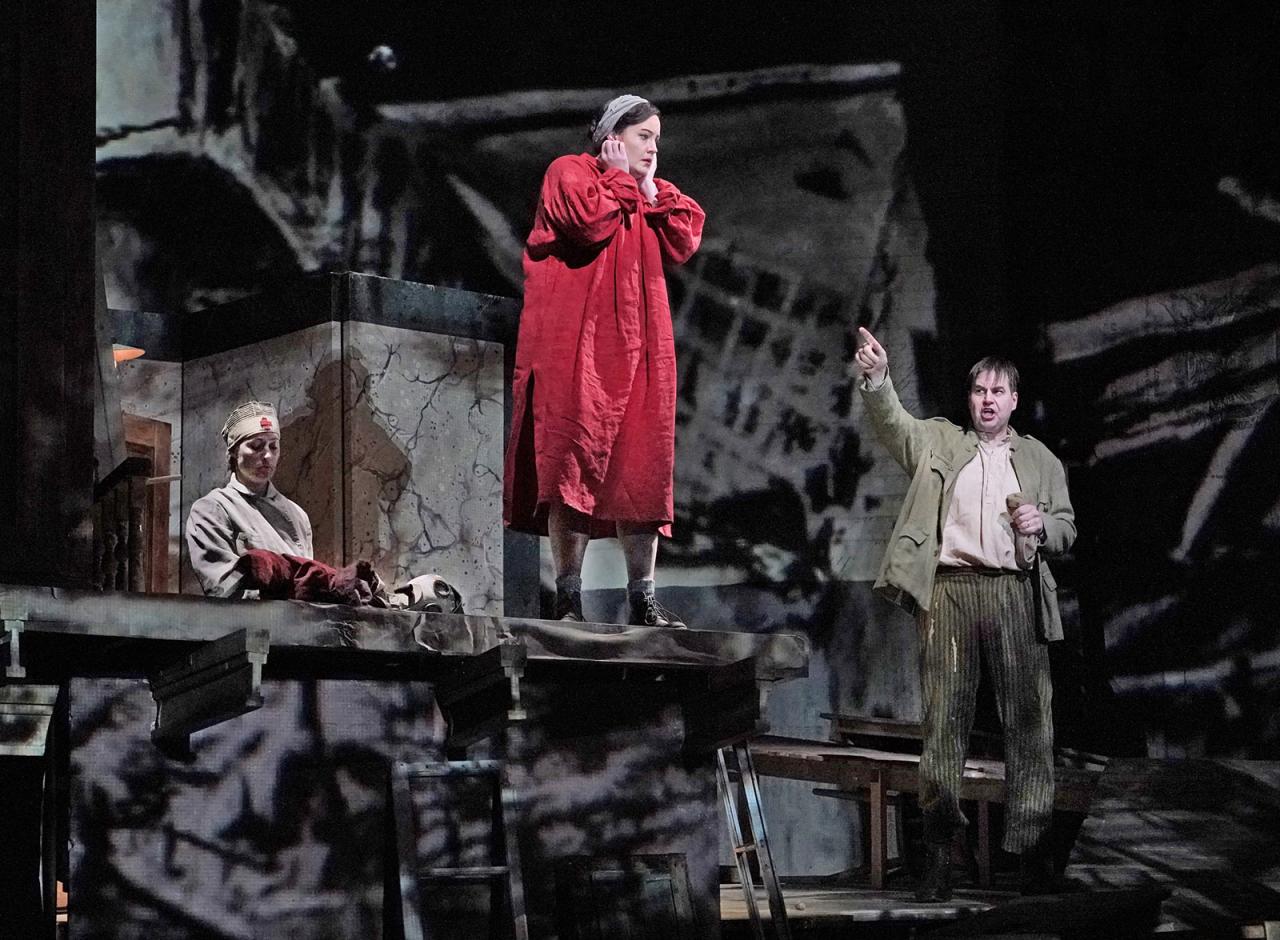Alban berg’s use of harmony in wozzeck is completely atonal – Alban Berg’s opera “Wozzeck” stands as a seminal work in the annals of music, renowned for its groundbreaking use of atonality. This essay delves into Berg’s innovative harmonic techniques, examining their impact on the opera’s dramatic narrative and the evolution of 20th-century music.
Introduction

Alban Berg’s opera “Wozzeck” holds a significant place in the history of music, marking a pivotal shift towards atonality. The opera’s plot, set in a military barracks, follows the tragic tale of Wozzeck, a downtrodden soldier tormented by jealousy, poverty, and the oppressive society around him.
Berg’s musical style in “Wozzeck” is characterized by its bold use of atonality, a departure from traditional harmonic structures and tonality.
Berg’s Atonal Techniques
Berg employs dissonance and unresolved chords extensively in “Wozzeck,” creating a sense of tension and anxiety that mirrors the emotional turmoil of the characters. He abandons traditional tonal centers, instead using a complex web of chromatic harmonies and dissonant intervals.
Berg’s atonal techniques, such as the use of augmented triads, polytonality, and unresolved seventh chords, challenge the listener’s expectations and create a heightened sense of instability.
For example, the opening scene of the opera features a dissonant chord that immediately establishes the atonal nature of the work. This chord, consisting of an augmented triad over a dominant seventh, sets the tone for the psychological and emotional turmoil that will follow.
Traditional Elements
Despite his embrace of atonality, Berg also incorporates traditional harmonic elements into “Wozzeck.” He uses tonality and functional harmony in certain sections, creating a sense of contrast and familiarity amidst the atonal landscape. For instance, the love duet between Wozzeck and Marie in Act III is set in a more traditional harmonic language, providing a brief respite from the atonal tension.
Berg’s ability to seamlessly blend traditional and atonal techniques creates a unique and complex musical language that enhances the emotional impact of the opera.
Dramatic Impact
Berg’s use of atonality contributes significantly to the dramatic impact of “Wozzeck.” The atonal music reflects the emotional turmoil and psychological states of the characters, intensifying the sense of tragedy and despair. The unresolved chords and dissonant harmonies mirror the inner conflicts and fractured relationships that drive the plot.
For example, the murder scene in Act III is accompanied by a chaotic and dissonant musical passage that heightens the tension and horror of the moment.
Comparison to Other Works, Alban berg’s use of harmony in wozzeck is completely atonal
Berg’s use of harmony in “Wozzeck” stands in contrast to that of other composers of the early 20th century. Arnold Schoenberg, a pioneer of atonality, employed a more systematic approach, using twelve-tone rows as the basis for his compositions. Igor Stravinsky, on the other hand, experimented with polytonality and rhythmic innovations in his works.
Berg’s approach to atonality, with its combination of traditional and atonal elements, is unique and has had a lasting influence on the development of 20th-century music.
Conclusion

Alban Berg’s use of harmony in “Wozzeck” is a testament to his innovative and expressive approach to music. By embracing atonality while incorporating traditional elements, Berg created a unique and powerful musical language that enhances the emotional impact of the opera.
His techniques have influenced generations of composers and continue to shape the landscape of contemporary music.
Helpful Answers: Alban Berg’s Use Of Harmony In Wozzeck Is Completely Atonal
What is atonality?
Atonality refers to music that lacks a tonal center or key, resulting in a sense of dissonance and unresolved tension.
How does Berg’s use of atonality contribute to the dramatic impact of “Wozzeck”?
Berg’s atonal techniques mirror the emotional turmoil and psychological states of the characters, enhancing the opera’s dramatic intensity.
What is the significance of Berg’s incorporation of traditional harmonic elements into “Wozzeck”?
Berg’s skillful combination of traditional and atonal techniques creates a unique musical language that adds depth and complexity to the opera’s harmonic structure.
